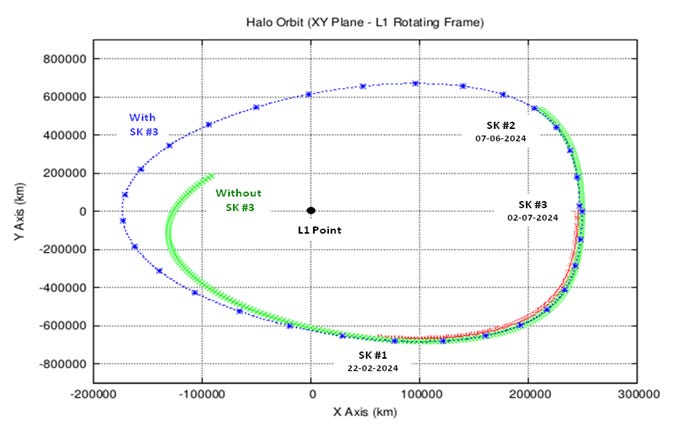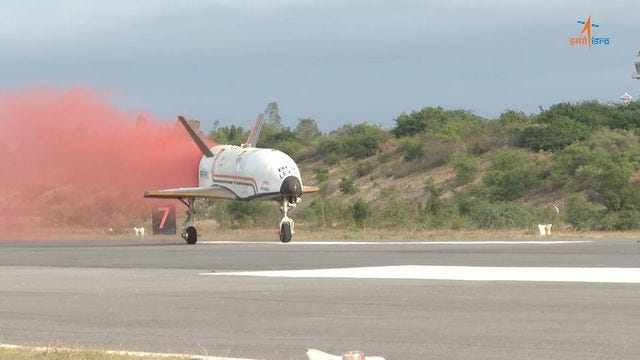Pradeep's Space Newsletter #61
Aditya-L1 heading to its second halo orbit around L1
India’s Aditya-L1 spacecraft is presently in an orbit around the Lagrangian Point (L1). It has performed three station-keeping maneuvers so far - 22 February, 7 June, and 2 July. Aditya-L1 was inserted into this orbit on 6 January 2024.
This orbit is in 3D and not on a single plane which usually happens in the case of remote sensing and geostationary satellites. This makes it more difficult to keep the spacecraft in this orbit.

A software that was developed by U R Rao Satellite Center (URSC) was used to calculate when to do the station-keeping maneuvers. ISRO was able to verify that the software works after the third station-keeping maneuver.
Read the technical details here.
No satellites for the rockets we have
Economic Times reported that the Secretary, Department of Space, and Chairman, ISRO, Dr. S Somanath speaking at Synergia Foundation said that there is no satellites to launch with the rockets we have.
The report does not mention the exact question asked.
When India opened up its private sector ISRO had said that it wanted more startups focused on applications rather than on rockets and satellites. There were not many applications to build at the time probably because of a lack of customers available to buy those applications.
The Indian Government also moved ISRO’s operational satellites to a new commercial entity, NewSpace India Ltd. (NSIL). NSIL announced that it would move from a supply-driven to a demand-driven model of producing satellites.
Before this, ISRO would build satellites for various applications like images of land and sea in various wavelengths. These would then be sold to Government Ministries like Agriculture, Forestry, Shipping, etc.
With a demand-driven model, NSIL would not build a satellite until one of these Government Ministries or private players would approach with a requirement to build a satellite.
Somanath says that most of the launch vehicles of the world are meeting demand from within the company (like SpaceX Falcon mostly launching SpaceX Starlink satellites) or are being subsidized to survive.
Somanath seems to be reiterating ISRO’s old stand to have more application companies although he says satellites. There seems to be a chicken-and-egg situation emerging. There is no demand from a customer for space applications that would require a satellite. Since there is no demand for satellites, the rockets are lying unused.
The original Economic Times story is here. This was made available via the ISRO sub-Reddit community.
RLV-LEX-03 successful
Space Machines Company satellite to be launched by SSLV in 2026
An Australian-Indian space company, Space Machines Company has signed a Dedicated Launch Service Agreement with India’s public sector, NewSpace India Ltd. (NSIL).
The agreement is for the launch of Space Machines Company’s Optimus spacecraft on the Small Satellite Launch Vehicle (SSLV) in 2026. Optimus weighs 450 kg and is an in-space servicing spacecraft.
The mission is called Space MAITRI (Mission for Australia-India’s Technology, Research and Innovation). It involves Digantara, Ananth Technologies, The University of Adelaide, The University of Sydney, The University of Technology Sydney, LeoLabs, Advanced Navigation, and the Australian Strategic Policy Institute (ASPI).


